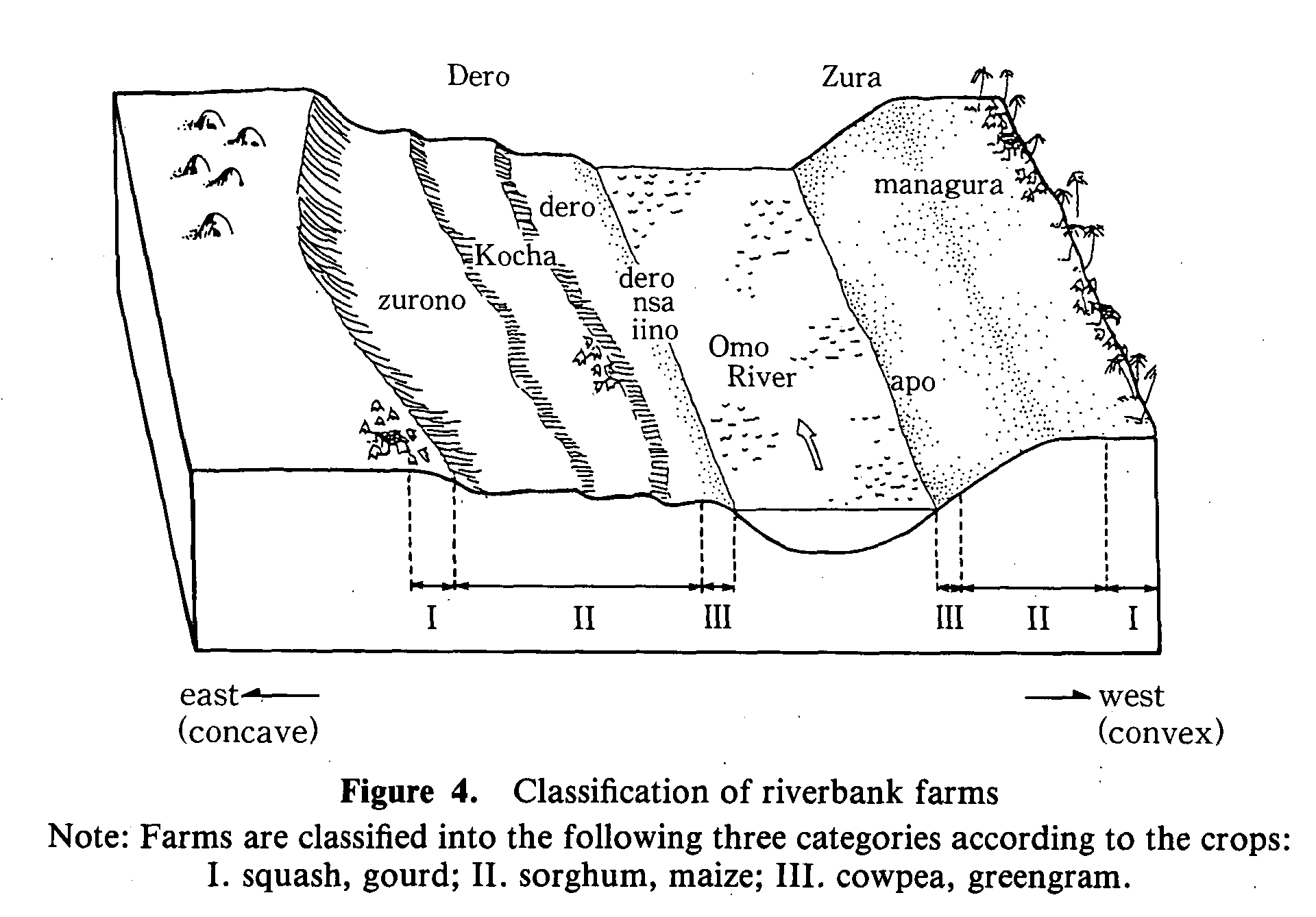Situation Analysis Summary: Impacts on the ecology of the Omo-Turkana Basin
Impacts on the ecology of the Omo-Turkana Basin from the Ambio situation analysis

The end of the floods and the expropriation of some of the most fertile lands for commercial agriculture present major challenges to wildlife and traditional livelihoods in the Omo-Turkana Basin and, thus, regional food security. The lowlands of the Omo Valley and the area surrounding Lake Turkana are home to people whose livelihood systems are based on a combination of mobile pastoralism, flood-retreat and rain-fed farming, and fishing.
The livelihood systems of the indigenous communities of the Lower Omo have traditionally depended on the annual flood of the Omo and on access to the land along the river. About 90,000 people consisting of at least ten ethno-linguistic groups depend on flood-retreat farming for sorghum (a type of cereal) cultivation along the Omo. In the more southerly parts of the Lower Omo, the areas flooded by the river are larger, while the surrounding plains are dryer; thus, these populations are even more reliant on flood-retreat farming than their more northerly neighbors, who also practice rain-fed cultivation in the plains.

Changes in the volume and seasonality of inflows from the Omo will impact significantly on the ecology of down- stream regions, including Lake Turkana. The Omo has historically carried high sediment loads and vital nutrients to the Lower Omo and Lake Turkana. The Gibe III dam traps sediment bed loads, which will overall reduce downstream sediment transport. Regulation of flow for hydropower and irrigation will also eliminate the seasonal flood pulse. These hydrological changes will have impacts on riverine communities dependent on sediments and floodwater for farming. The Gibe IV dam downstream will emulate Gibe III’s regulation of river hydrology and will exacerbate the situation.
The dampening of seasonal inflows from the Omo are also expected to cause a decline in downstream productivity, given that the nutrient inputs from the river are essential for primary productivity in the lake. Productivity rates in sheltered areas and shallow lagoons, such as Ferguson’s Gulf, are among the highest ever recorded. Lake Turkana’s distinctive jade green color is caused by high concentrations of cyanobacteria (blue–green algae) in the lake’s waters, which are key to sustaining the lake’s productive fisheries. The lake is nutrient limited and input from the Omo is a critical factor that drives chlorophyll concentrations, as waters entering from the river carry vital nutrients into the lake. As a result, there is a strong productivity gradient decreasing from the north to south and seasonal phytoplankton blooms coincide with the annual flooding from the Omo River.
For further information, see the recently published paper “Lake Turkana, major Omo River developments, associated hydrological cycle change and consequent lake physical and ecological change” by Drs. Sean Avery and Emma Tebbs.
Sean Avery achieved his BSc and PhD in civil engineering at the University of Newcastle-upon-Tyne, specializing in hydrology and hydraulic structures. He is an independent consultant in Kenya, affiliated with King’s College London, and listed in the Kenya Gazette to practice in water supply, irrigation, effluent treatment, dams and hydrology. Dr. Avery wrote a seminal booklet, “What Future for Lake Turkana?”, on the impact of hydropower and irrigation on the world’s largest desert lake.
Dr. Emma Tebbs is a Lecturer in Physical Geography and Remote Sensing at King’s College London. Her research focuses on the remote sensing of aquatic and terrestrial ecosystems.



 Print
Print Email
Email










